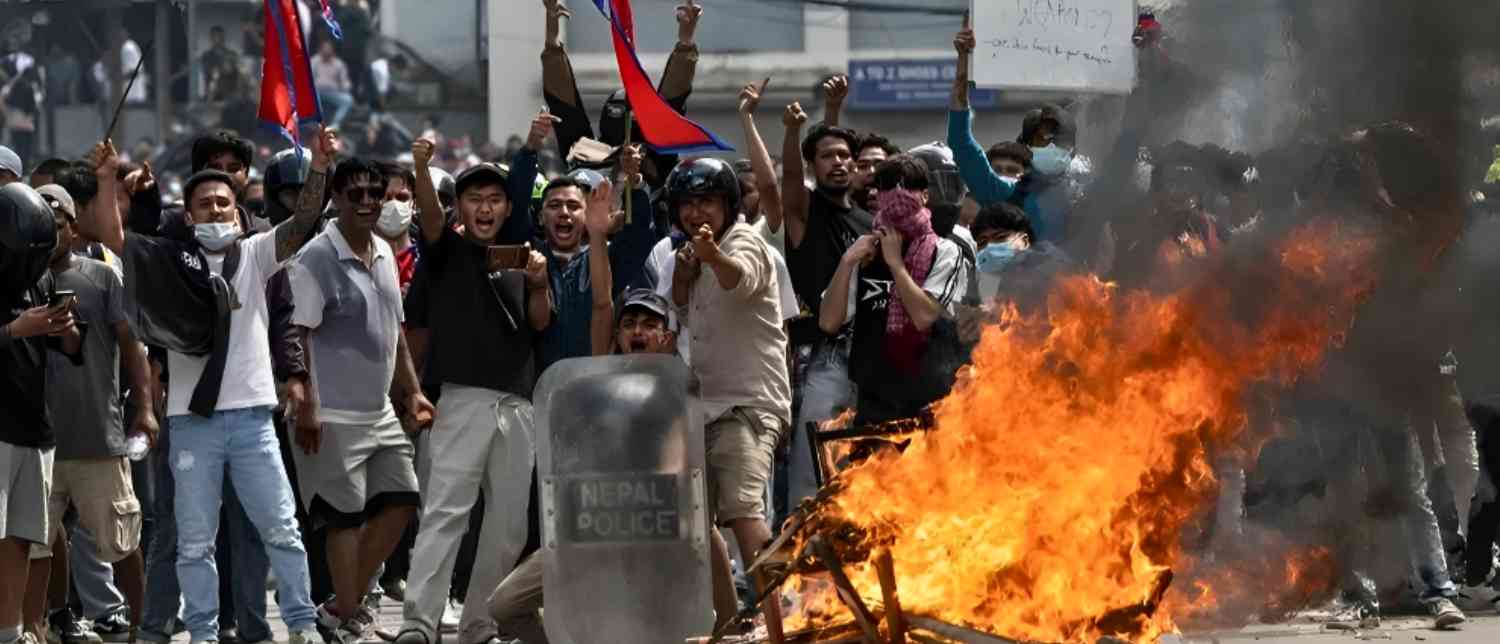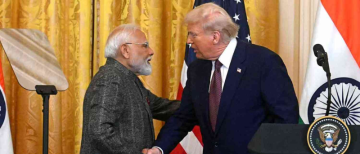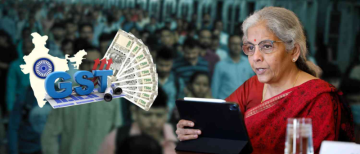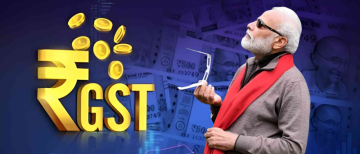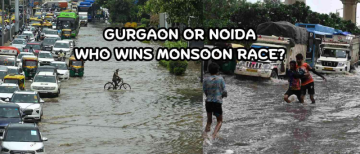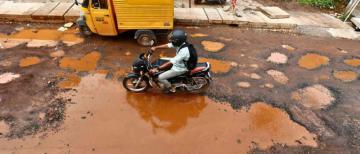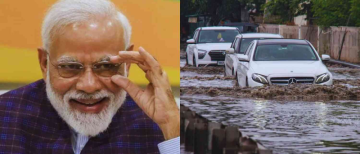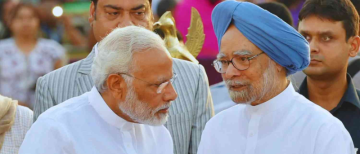Nepal is witnessing something it has not seen in decades: thousands of young people taking to the streets, demanding change, and refusing to be ignored. What started as scattered demonstrations by students and workers has now grown into a nationwide movement led mostly by the youth—college students, fresh graduates, and young professionals who feel cheated by their government.

These protests are not just about one issue, but a mix of anger and frustration built up over the years. The youth are tired of corruption, rising unemployment, lack of opportunities, and leaders who make promises but never deliver. In cities like Kathmandu, Pokhara, and Biratnagar, the streets have filled with young voices demanding action. Social media has become their weapon, helping them spread messages within minutes, not just across Nepal but internationally.
Why the Youth Are Rising
Nepal’s young generation makes up more than 40% of its population. Many of them feel trapped. They study hard, get degrees, yet jobs are rare and often given only to those with connections. According to recent labor reports, nearly 400,000 Nepali youth seek opportunities abroad every year because their own country fails to give them work. This has left Nepal heavily dependent on remittances sent by those working overseas.

For young people, corruption is not just an abstract idea—it is a daily enemy. Nepali citizens regularly hear about funds meant for schools, hospitals, or roads disappearing into the pockets of politicians and middlemen. Even during COVID-19, there were scandals about inflated prices for medical supplies. For the youth, this was proof that their leaders do not care about them. These scandals have now pushed them into action.
Lessons from the Past
Nepal has seen big political changes before. In 2006, the People’s Movement, backed by youth, helped end the monarchy and bring democracy. Yet, nearly 20 years later, many young citizens feel betrayed. Instead of a system that works for the people, corruption and political games have replaced hope. Political leaders keep fighting among themselves, switching sides, and forming unstable governments.

The difference this time is that today’s youth are more aware and more connected than past generations. With the internet, they can see how young people in places like Hong Kong, Chile, or Iran have protested injustice. Nepal’s youth protests are part of this global wave where Gen Z has decided not to remain silent.
A Message to World Leaders
Though the protests are happening in Nepal, their message is much larger. Across the world, young people are increasingly calling out corrupt regimes. From protests in Sri Lanka in 2022 that forced a president to resign, to climate marches in Europe, or democracy movements in the Middle East, the story is the same—the youth are fed up with governments that ignore them.

Nepal’s protests remind global leaders that young people have power. They cannot vote their way out when elections are corrupted, but they can march, sit on streets, share videos online, and embarrass governments that try to silence them. For corrupt regimes, ignoring the youth or blocking the internet only delays the movement. Eventually, frustrated young citizens, who see their futures slipping away, find ways to push back harder. Nepal today sends that warning signal.
The Power of Social Media
One of the strongest weapons for these protests has been social media platforms like TikTok, Instagram, and X (formerly Twitter). Young activists post videos of crowded streets, police crackdowns, and speeches on corruption. These clips go viral, getting attention from international media and human rights groups.

Nepal’s government has tried old tricks like blaming “foreign forces” or “anti-national elements,” but the youth are sharper than ever. They laugh off such excuses online and turn them into memes that weaken the government’s credibility further. In this modern battle, memes can be more powerful than official press conferences.
Challenges Facing the Youth Movement
However, there are also challenges. Protest energy can fade if demands are not organized. Nepal’s youth need to build leadership that is trustworthy and free from the trap of political influence. Historically, rulers have tried to divide movements by offering jobs or benefits to those at the frontlines. If young activists fail to stay united, the system may swallow them.

Another challenge is maintaining peace. If protests turn violent, governments often take that as an excuse to use strong force. For now, Nepal’s youth-led demonstrations have been largely peaceful, which is their strength. Keeping them that way is crucial.
Global Support and Solidarity
Youth movements work best when there is global solidarity. Already, Nepali diaspora living in the U.S., Europe, and the Gulf have started organizing support rallies. International NGOs and rights groups are issuing statements urging Nepal’s leaders to listen to young voices.

Worldwide, governments facing their own corrupt practices are watching carefully. They know that if Nepal’s youth succeed, it may inspire their own young citizens to rise up. That is why Nepal's protests matter—not just for Nepal but for the whole world.
What Needs to Change Now
Nepal’s government still has time to act before things spiral out of control. Some steps could include:
-
Honest investigation into corruption cases – showing that no one is above the law.
-
Creating jobs for the youth – focusing on industries like IT, agriculture, and tourism where Nepal has potential.
-
Reforming education and skill programs – making sure degrees actually lead to employability.
-
Transparency in governance – digitizing systems so people can track where budget funds are going.
-
Dialogue with youth leaders – instead of labeling them as enemies, engaging them in solutions.
If Nepal’s leaders fail to act, the protests will only grow stronger. History shows that ignoring the youth can push countries into political crises or even revolutions.
The Regional Context
South Asia has often seen youth at the frontlines of political change. In 2022, Sri Lankan students and workers camped outside the presidential palace until the government fell. In India, farmer protests saw huge participation from young people, forcing the withdrawal of unpopular laws. Bangladesh too recently witnessed student-led campaigns demanding justice against inequality.

Nepal sits right in this region, and its protests are part of this larger regional pattern. It is clear: the youth of South Asia are no longer afraid, and their movements cross borders, inspiring one another.
A Wake-Up Call for Corrupt Regimes
The real lesson from Nepal is simple—youth will not stay silent forever. Governments may think young people are too busy with phones or entertainment to care about politics. But when injustice touches their daily lives, they rise, and they rise with more force than previous generations because they carry technology, creativity, and global solidarity on their side
 .
.
This is why corrupt regimes across the world should be worried. From Africa to Latin America, from Asia to Europe, wherever there is corruption, inequality, and arrogance of power, youth movements are a threat to the status quo. Historic revolutions have often begun with student gatherings; the same is happening again in modern forms.
Nepal’s protests are not just about potholes in streets or missing job opportunities—they are about dignity, fairness, and the right to dream of a better life in one’s own country. That is why they matter globally.
The Hope Ahead
Despite the challenges, these youth protests offer hope for Nepal. If the government listens and reforms, Nepal could see a fresh era where its young generation does not have to migrate abroad but builds the nation at home. If ignored, however, the protests will only grow larger and more disruptive, shaking the very foundation of Nepal’s political system.
_1757489487.jpg)
What remains clear is that the young people of Nepal have sent a loud message: they are awake, they are aware, and they are not afraid anymore.
With inputs from agencies
Image Source: Multiple agencies
© Copyright 2025. All Rights Reserved. Powered by Vygr Media.

